The Grosvenor School of Modern Art was a British Art School founded by printmakers and linocut artists Claude Flight, Ian McNab, Cyril Power and Sybil Andrews in 1925. It was situated at 33 Warwick Place, Pimlico London, and attracted a cross-section of students from across the globe, including Swiss artist Lill Tschudi.
The Grosvenor School of Modern Art became a leading force in the production and promotion of modern printmaking works while teaching a solid foundation in art history, with each artist lecturing on their speciality. Claude Flight lectured on the art of linocutting, and Cyril Power on architecture. The young Sybil Andrews was the School Secretary.
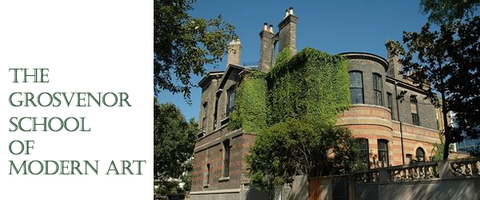
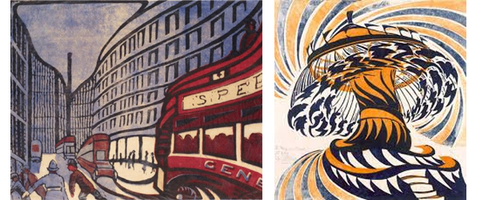
Claude Flight was an inspirational figure, who only became an artist in his early thirties, after stints as an engineer, librarian, farmer and beekeeper. “Time seems to pass so quickly nowadays. Everybody is in a hurry… this speeding up is one of the psychologically important features of today. Traffic problems, transport problems, everybody is on the rush either for work or pleasure; business is hustle, the Cinema all movement,” wrote Flight in 1925. His description of modern life was a call to action.
Flight envisaged a new art that celebrated the speed, movement and hustle of this new world. His students responded with works characterised by their clean-cut blocks of colour and their exhilarating sense of dynamic movement and design. Sport and urban transport were among their most popular subjects. The Grosvenor School artists followed in the footsteps of Futurism (with hints of the Art Deco spirit), capturing the spirit of their time by immortalising the rapidly changing world of the 1920s and 1930s.
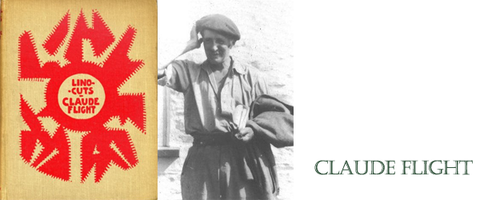
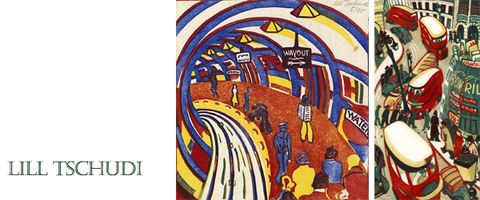

All of the students attended Flight’s informal classes on his method of linocutting. Linocut was first used as an art medium in the early 20th century by the German Expressionist artists, Erich Heckel, Rohlfs and Gabriele Munter and by members of the Russian Constructivist movement such as Wassily Kandinsky and Alexander Rodchenko. At the Grosvenor School, Flight converted a group of talented artists, notably Cyril Power, Sybil Andrews, Lil Tschudi and a trio of Australian students - Ethel Spowers, Dorrit Black and Eveline Syme, to using the humble linocut as a medium for their artistic revolution.

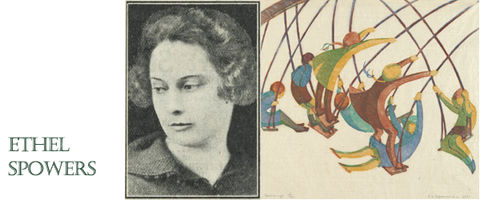
Linoleum is a mixture of linseed and cork that is laid down on a canvas backing sheet. It provides a tough yet pliable surface, which is often used for flooring. Claude Flight’s innovation was to encourage his students to use different blocks for each colour. He abandoned the traditional procedure of overprinting the outline of the design from a single ‘key bock’. Instead, a design was first drawn onto a grease-proof paper, the lino block was oiled and the design then adhered onto it. The design was then traced and under pressure from a pointed instrument which gave the artist the outline that was then cut away. The second or third blocks with the additional designs were worked on in the same way then each block was cleaned and inked with one colour, a thin oriental paper laid on the block and the colour transferred by gentle pressure using the back of a spoon or a ‘baren’ – a sort of circular leather pad.

With the over-layering of colours from the multiple blocks a novel vibrancy of colour and freedom was achieved. The linocuts, printed on fine oriental tissue paper, were intended to be affordable artworks priced, according to a Telegraph article, “to pay the cost of production with a couple of pints of beer and a visit to the cinema thrown in.” The Grosvenor School artists strongly believed that their artwork should be available to ordinary people, adding a social dimension to their art revolution.
Flight was the most vigorous advocate of these prints and he finally succeeded in mounting the First Exhibition of British Linocuts in 1929. The prices of the work exhibited at the Redfern Gallery in London ranged from one to three guineas. The exhibition was declared an outstanding success and Grosvenor School prints were purchased by key collections including the British Museum and the Victoria & Albert Museum.
Together, as their art developed, the members of the Grosvenor School of Modern Art became a recognised force in the interwar art world. They were delighted to view themselves as pioneers, sharing a common engagement with the dynamism of modern life conveyed through their stylised exaggeration of line and form.
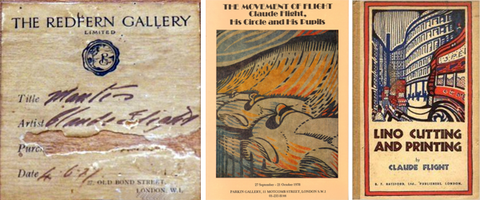
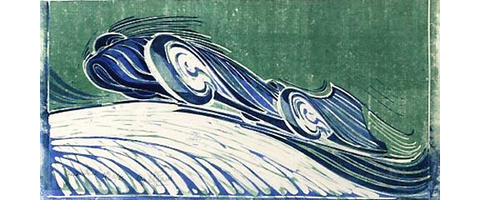
The fashionable appeal of the Grosvenor School linocuts did not last long, however. Even before the outbreak of the Second World War in 1939, interest had begun to wane. The group ceased to exhibit together and went their separate ways. According to a Bonham’s publication, “When Flight died, in 1955 in Wiltshire, after spending the last decade of his life as an invalid, he was a forgotten figure.”
The period of eclipse lasted until there was a revival of interest in the Grosvenor School artists in the 1970s. Since then, the demand for these vibrant linocut prints has grown and grown and all of the major artists of the Grosvenor School now have a worldwide reputation with their work in major public museums including the Museum of Modern Art in New York, the National Gallery of Australia, and the Glenbow Museum in Calgary, to name just a few. Many Grosvenor School pieces appeared in the groundbreaking ‘Modern Life: British Prints, 1914 to 1939’ exhibition held at the Boston Museum of Fine Arts and the Metropolitan Museum of Art in 2008.
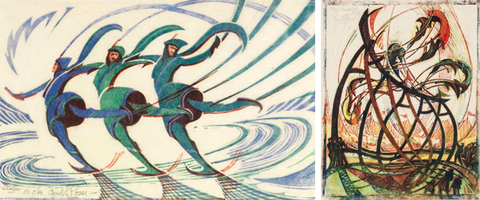
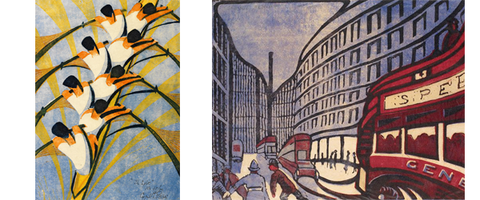
Since 2008, collectors have driven prices for Grosvenor School artwork into a new league. In 2009, a record was set at Bonhams when Claude Flight’s ‘Speed’, a view of London buses hurtling down Regent Street in 1922, sold for £26,400. One of Cyril Power’s most sought-after images, ‘The Eight’, is a view of oarsmen powering their way under Hammersmith Bridge. It sold for £2,000 at Redfern Gallery in the 1980s and then reached a record £57,600 at a Bonhams sale in 2011.
Cyril Power, Lill Tschudi and Sybil Andrews remain amongst the most popular artists at artrepublic. Their cutting edge prints still carry a wonderful sense of the excitement and movement of life which has translated effortlessly into the 21st century.